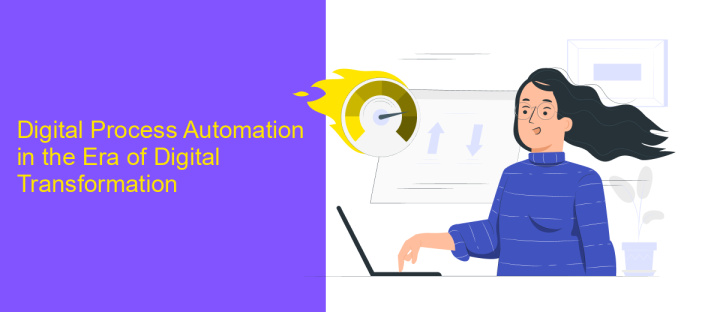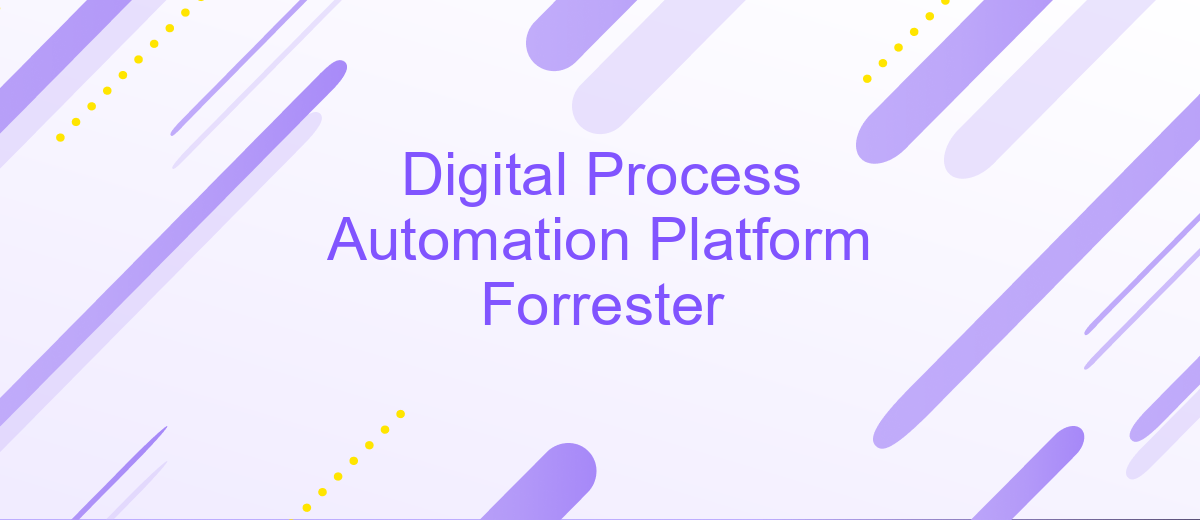Digital Process Automation Platform Forrester
In today's rapidly evolving digital landscape, businesses are increasingly turning to Digital Process Automation (DPA) platforms to streamline operations, enhance customer experiences, and drive innovation. Forrester's comprehensive analysis of leading DPA platforms offers invaluable insights into the capabilities and performance of these solutions, helping organizations make informed decisions to stay competitive and agile in a dynamic market.
Introduction
In today's rapidly evolving digital landscape, businesses are under immense pressure to streamline their operations and enhance customer experiences. Digital Process Automation (DPA) platforms have emerged as a critical solution, enabling organizations to automate complex workflows, reduce manual tasks, and drive efficiency. Forrester, a leading research and advisory firm, provides valuable insights into the capabilities and benefits of various DPA platforms, helping enterprises make informed decisions.
- Enhanced operational efficiency through automation
- Improved customer satisfaction and engagement
- Reduced operational costs and minimized errors
- Scalability to adapt to growing business needs
- Integration with existing systems and technologies
By leveraging Forrester's comprehensive analysis, businesses can identify the most suitable DPA platform to meet their unique requirements. This not only accelerates digital transformation but also ensures a competitive edge in the marketplace. As organizations continue to embrace digitalization, the role of DPA platforms will become increasingly pivotal in driving sustainable growth and innovation.
Digital Process Automation in the Era of Digital Transformation

In today's rapidly evolving digital landscape, Digital Process Automation (DPA) has become a cornerstone for businesses striving for operational efficiency and competitive advantage. As organizations undergo digital transformation, DPA enables them to automate complex workflows, streamline processes, and reduce manual intervention, ultimately driving productivity and innovation. By leveraging advanced technologies such as artificial intelligence, machine learning, and robotic process automation, companies can enhance their agility and responsiveness to market changes.
One of the critical aspects of successful DPA implementation is the seamless integration of various systems and applications. Tools like ApiX-Drive play a pivotal role in this context by offering robust integration capabilities. ApiX-Drive allows businesses to connect disparate software solutions effortlessly, ensuring smooth data flow and communication across platforms. This not only simplifies the automation process but also enhances data accuracy and consistency, enabling organizations to make informed decisions and deliver superior customer experiences. In the era of digital transformation, embracing DPA and leveraging integration services like ApiX-Drive are essential for staying ahead in the competitive landscape.
Forrester’s DPA Market Overview

Forrester's Digital Process Automation (DPA) market overview provides a comprehensive analysis of the current landscape and future trends of DPA platforms. These platforms are designed to streamline and automate complex business processes, enhancing efficiency and productivity across organizations. Forrester's insights are crucial for businesses aiming to stay competitive in an increasingly digital world.
- Market Leaders: Forrester identifies key players in the DPA market, highlighting their strengths and unique features.
- Technological Advancements: The report discusses the latest innovations in DPA technology, including AI integration and advanced analytics.
- Adoption Trends: Insights into how various industries are adopting DPA solutions and the benefits they are experiencing.
- Challenges and Opportunities: An examination of the obstacles organizations face when implementing DPA and the potential opportunities for growth.
Forrester's DPA market overview serves as an essential resource for decision-makers looking to invest in digital process automation. By understanding the competitive landscape, technological advancements, and adoption trends, businesses can make informed decisions to enhance their operational efficiency and drive digital transformation.
Benefits and Challenges of DPA

Digital Process Automation (DPA) platforms offer numerous benefits for organizations looking to streamline their operations and improve efficiency. By automating routine tasks and processes, companies can reduce human error, save time, and lower operational costs. Additionally, DPA platforms provide enhanced visibility and control over business processes, enabling better decision-making and faster response times.
However, implementing a DPA platform also comes with its own set of challenges. Organizations must carefully assess their existing processes and identify areas where automation will be most beneficial. Integration with legacy systems can be complex, requiring significant time and resources. Moreover, there is often a need for employee training to ensure that staff can effectively use the new system.
- Reduced operational costs
- Improved efficiency and productivity
- Enhanced process visibility and control
- Faster decision-making
- Minimized human error
In conclusion, while DPA platforms offer significant advantages in terms of efficiency and cost savings, organizations must be prepared to address the challenges associated with implementation. Careful planning, resource allocation, and employee training are essential for maximizing the benefits of DPA and ensuring a smooth transition.
- Automate the work of an online store or landing
- Empower through integration
- Don't spend money on programmers and integrators
- Save time by automating routine tasks
Critical Considerations When Evaluating DPA Technologies
When evaluating Digital Process Automation (DPA) technologies, it is crucial to consider the platform's scalability and flexibility. Organizations must ensure that the DPA solution can efficiently handle increasing volumes of data and processes as the business grows. Additionally, the platform should offer customizable workflows and be adaptable to various industry-specific requirements. A robust DPA solution should support seamless integration with existing systems and third-party applications, enabling a cohesive digital ecosystem.
Another critical factor is the ease of integration and the availability of integration services. A platform like ApiX-Drive can significantly streamline the process by offering automated integrations with numerous applications and services. This reduces the need for extensive manual coding and ensures that different systems can communicate effectively. Additionally, the DPA technology should provide comprehensive analytics and reporting tools to monitor performance and identify areas for improvement. By considering these factors, organizations can select a DPA platform that aligns with their operational goals and drives digital transformation.
FAQ
What is a Digital Process Automation Platform?
How does a Digital Process Automation Platform benefit businesses?
What are some key features to look for in a Digital Process Automation Platform?
How can businesses integrate their existing systems with a Digital Process Automation Platform?
Is it necessary to have technical expertise to implement a Digital Process Automation Platform?
Time is the most valuable resource for business today. Almost half of it is wasted on routine tasks. Your employees are constantly forced to perform monotonous tasks that are difficult to classify as important and specialized. You can leave everything as it is by hiring additional employees, or you can automate most of the business processes using the ApiX-Drive online connector to get rid of unnecessary time and money expenses once and for all. The choice is yours!


